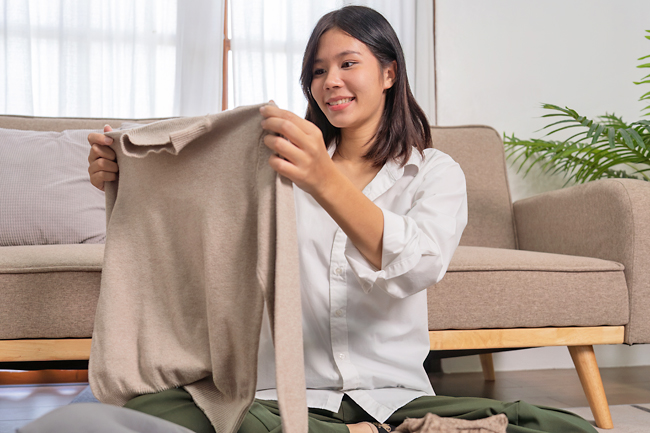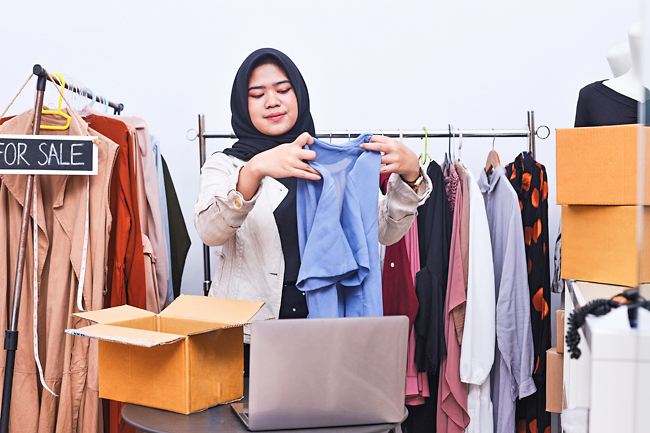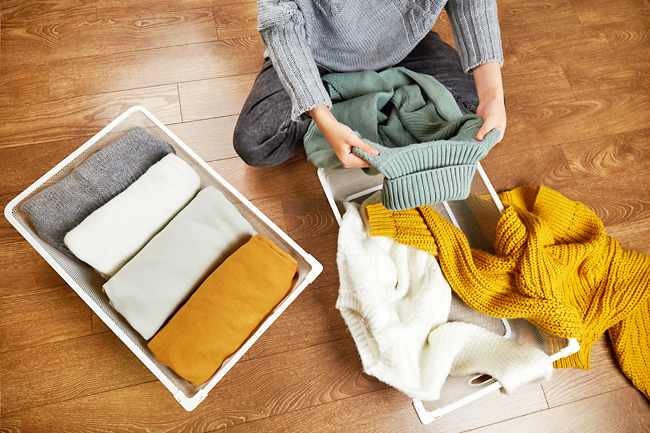It all started when I stumbled into minimalism by accident – or rather, by waistline.
Shedding the weight meant I had to part ways with a significant chunk of my wardrobe.
At first, I mourned the loss of my “someday” clothes – the ones I swore I’d wear once I finally got my act together.
But as I packed them away for donation, I was surprised to feel relief rather than regret. The newly freed floor and wardrobe space felt like a shot of dopamine.
In the days that followed, I found myself pondering how to fill that empty space – not with clutter, but perhaps with something meaningful, like a cosy reading nook or another shelving unit.
Minimalism, especially in how we decorate and organise our living spaces, is more than an aesthetic. It isn’t about having less; it’s about living with intent and purpose.
It’s a mindset shift that can bleed into other parts of your life, like how you spend your time, money, and energy. A minimalist home feels lighter, calmer, and more inspiring – qualities many of us could use in these chaotic times.
STARTING SMALL
Let’s not sugarcoat it: the beginning stages of minimalism are hard.
Letting go is an emotional rollercoaster. That gift bag your best friend gave you as part of a birthday present eons ago? Still sitting there, collecting dust for “sentimental purposes.”
That knick-knack you’ve never used? Suddenly, it’s a family heirloom. You’ll feel pangs of guilt – about the waste or the memories attached to these things – but the key is to start small.
Begin with a single drawer or one corner of a room.
Pick up each item and ask: Does this serve a purpose? Or is it just taking up space?
You’ll be amazed at how much easier it gets once you get over that first hump. Momentum is your best friend in decluttering.
DECLUTTERING SUSTAINABLY
Now, what to do with all the stuff you no longer need?
Tossing everything into a bin bag and hauling it to the landfill is hardly the minimalist way. Instead, consider more sustainable options:
Donate: Clothes, books, and household items in good condition can find a new home through charities, second-hand shops or even to friends and family.
Sell: Garage sales, online marketplaces, or even a good old “yard sale” are great ways to give your items a second life while earning a little extra cash.
Repurpose: Get creative with items that have potential for a second act – old T-shirts can become cleaning rags, and glass jars can morph into quirky plant holders.
WHY MINIMALISM
Once you begin to pare down, something magical happens: your focus shifts. With fewer distractions around you, you can focus on the things that truly matter – family, hobbies, your well-being.
Minimalism transforms your home into a sanctuary, not just a storage unit for stuff.
But here’s the real secret: minimalism isn’t about depriving yourself. It’s about curating a life filled with the things and experiences that align with your values.
A minimalist lifestyle lets you live with purpose and intent, rather than simply accumulating for the sake of it. Let’s not forget that minimalist spaces look amazing.
Clean lines, uncluttered surfaces, and purposeful decor make your home feel like a retreat. Plus, they’re much easier to clean – so that’s one less chore to dread.
Adopting minimalism is a journey, not a destination.
You’ll make mistakes (like when I accidentally threw out a perfectly good set of headphones), but you’ll also discover how freeing it feels to own less and live more.
So, start with that one drawer, donate what you don’t need, and resist the urge to fill your space with more stuff. Trust me, your future self – and your cleaner, calmer home – will thank you. – Wardi Wasil







